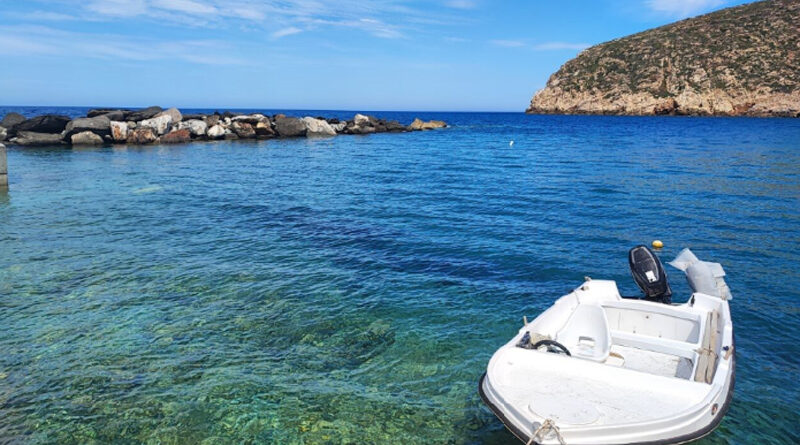NAXOS – A LITTLE BIT OF EVERYTHING
Nestled in the Aegean Sea, and the largest and most mountainous of the Cyclades islands, Naxos is easily reached by ferry from Athens or many of the other islands in the archipelago.
Although Naxos may not be as well known as Santorini and Mykonos, that doesn’t mean it should be ignored. In fact, quite the opposite. Naxos is an island with little bit of everything. Whether you want beaches and bars, history or hiking, or food, scenery and nature – Naxos has it all.
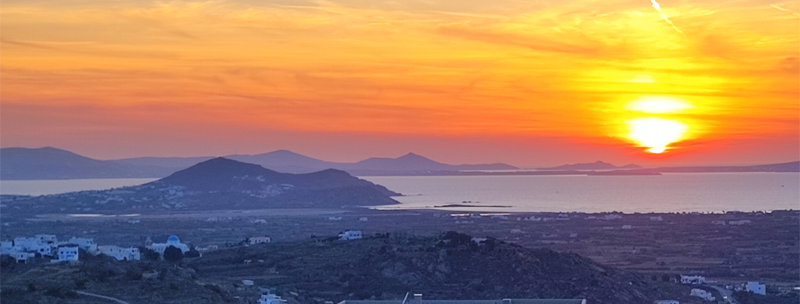
The main town of Naxos Chora has plenty of restaurants and boutique shops and in the evening, I recommend spending time wandering through the narrow stone streets of the old town. Stop for a drink and people watch or grab an ice cream to enjoy as you take a leisurely stroll. Pause at boutique shops full of fancy designer items, local handicrafts, or souvenirs.

A few evening hours in the Old Town is definitely recommended.
If you prefer to sit by the sea, head for the harbour where you’ll find plenty of restaurants.
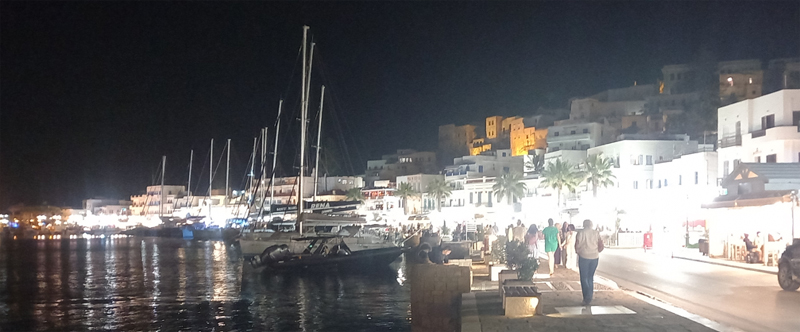
The main drag is full of life; a buzz of people, laughter and music. Or if you fancy a slightly quieter atmosphere head towards the giant Portara (Apollo’s Gate) and stop at Kozi where you can see and hear the sea just metres from your table, and you get a great view of the giant temple gate lit up against the night sky.

In the main (but small) square on the transition between the old and new town you’ll find Scirocco, where friendly waiters will tempt you with, among other foods, locally grown potatoes (Naxos is a major potato growing area, and potatoes are the island’s number one export).
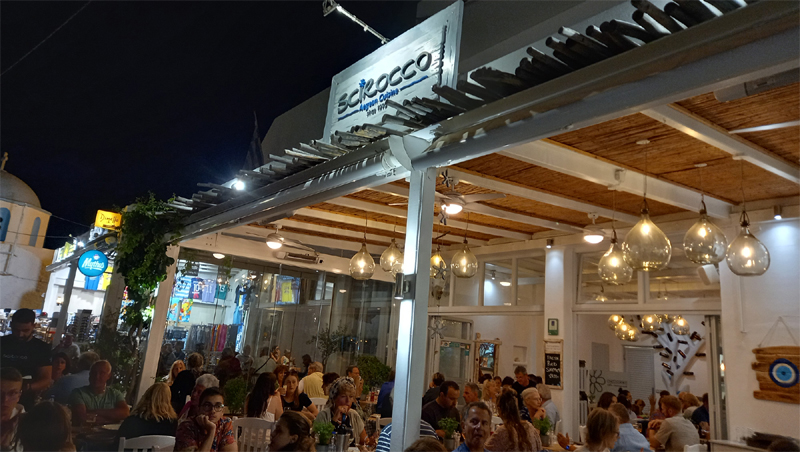
Head out of town a little further (but not completely) and grab a table for dinner at To Elliniko. The seating area is ‘gated’ so although you are outside and watching the world go by, it feels less hustled and little more exclusive.
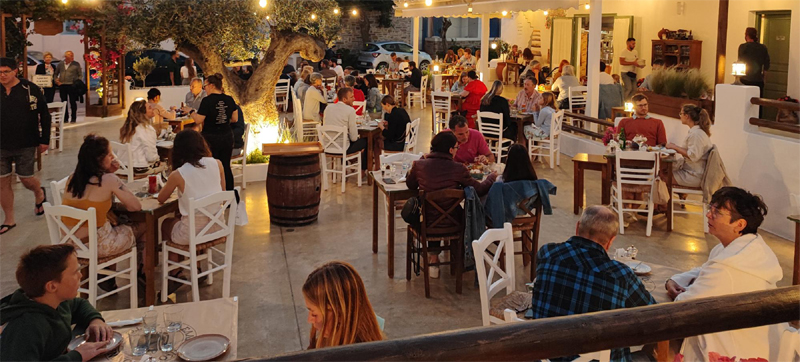
All three restaurants mentioned cater to vegetarians. You won’t find a huge choice, but you’ll certainly still get a good meal. Vegan is a little trickier, but not impossible. However, the choice will be even further reduced.
If what you are looking for is an easy beach and bar holiday, then staying in or near Naxos Chora makes sense. There are over 25km of beach spreading out from the town, so you won’t even need to bother with a car as everything is within walking distance – even the outdoor cinema.
We stayed at the Princess of Naxos Hotel, which is just across the road from the beach, and an easy 15-minute walk into town. It has its own pool area, and a light breakfast is included. The apartment style rooms have a small kitchen space – ideal for keeping your water chilled, making yourself a cuppa, or cooking an easy pasta meal if you fancy a night in. There is also plenty of parking if you do decide to hire a car. Reception can organise this for you, or walk into town and almost directly opposite Scirocco on the main square you’ll see the car hire. Here you can hire anything from an ATV to a town car.
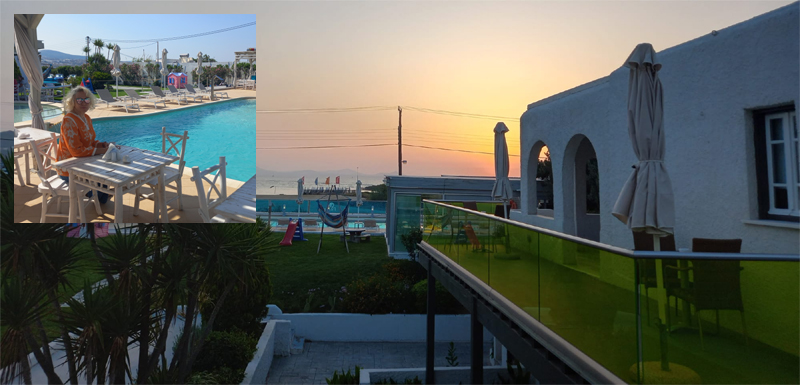
Although it’s easy to spend an entire week just lazing on the beach and only moving when your tummy tells you to, Naxos does have a lot more to offer.
The island is full of ancient history, from Appollo’s Gate to the Temple of Dimitria. To visit the temple (also known as Demeter or Sangri), you’ll need to hire a car. It’s then a short drive into the hills, between Naxos Town and the beach hamlet at Pyrgaki. Entrance is around 4Euros and it’s worth it not just for the ruins dating back to around 500BC, but also the views across the hills, dotted with tiny yellow and white flowers peeking through the dry grass, and bright clumps of purple bougainvillea.
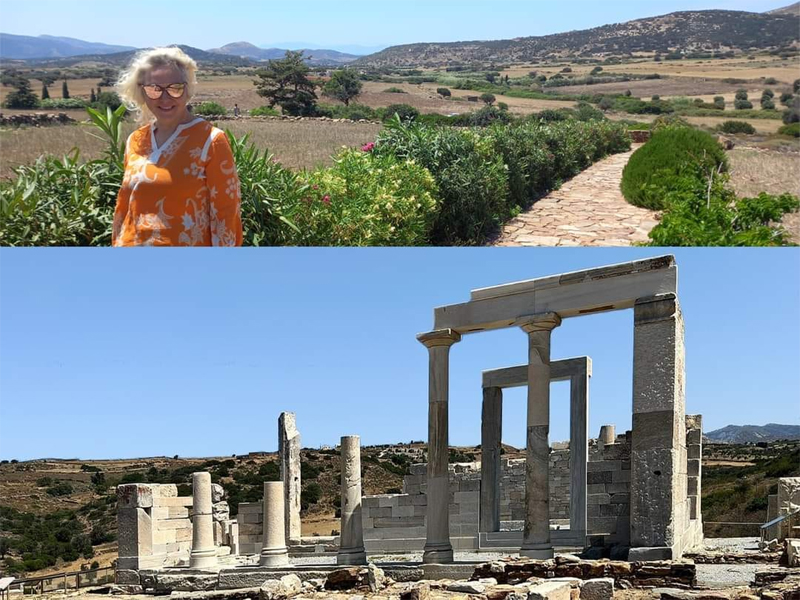
Naxos is literally littered with archaeology. For example, Flerio, near Mili, is an ancient marble-working area. Here you can see the remains of two kouros; large marble statues created in the 7th and 6th centuries BC. Each measures about 5.5m and both are broken and unfinished. The theory is that they were damaged during transportation or were simply discarded by dissatisfied sculptors. The first kouros, which is an easy walk, is lying on its back under a tree. The second is on a hillside about 500m away.
Naxos was (and still is) a major exporter of marble. For example, the famous lions on the ancient island of Delos were carved from Naxian marble. Evidence of this industry, dating back to at least 800BC, can be seen all over the island. Giant white cliffs tower over the countryside, gleaming bright in the sunlight, like columns of enormous sugar cubes, their crystals sending sparkles over the landscape and dwarfing the lorries below.
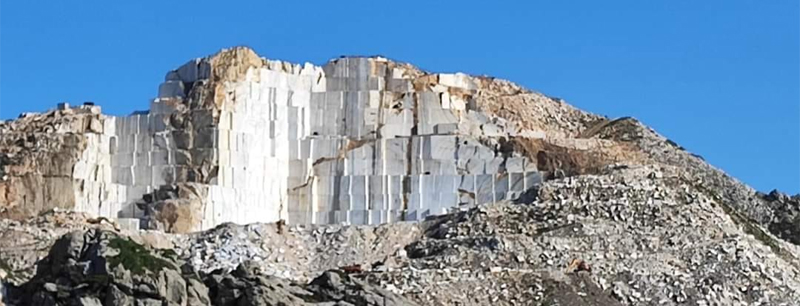
Naxos is also known for its fruit and vegetables, and a visit to Greece wouldn’t be complete without olive oil. There are over half-a-million olive trees on Naxos, and Eggares Olive Press Museum is worth a visit. Entrance is free, and a guide will explain the history of olive oil pressing on the island, including how villagers joined together to harvest and press. And, of course, you can taste the delicious oils with flavours like chocolate, truffle, lemon, or thyme.

If you’re a lover of herbs in your cooking, or tisanes to drink, then a stop at Naxia GI in Chalki/Halki is a must. The store has every herb and tisane you can imagine. Step inside and breathe in the wonderful aromas, taste the tisanes, and learn about local herbs and their traditional uses, and don’t worry about buying lots – herbs don’t weigh much so I am sure you can squeeze a few sachets in the suitcase!
If you are looking for a local souvenir, then make a stop at the Limpertas Manolis Pottery. This fourth-generation potter has shops in town, but my advice is a trip to the workshop on the main road from Naxos (not far from the Temple of Dimitria). If you time it right (morning or afternoon, not lunchtime), you can watch the famous potter at work. The shop is full of fascinating items from beautiful bowls to fancy flowers – all handmade.
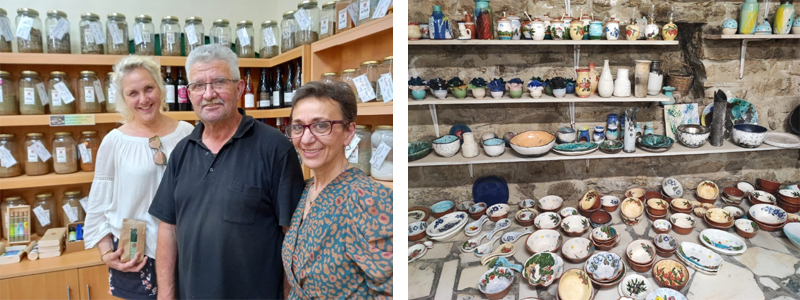
And for the alcohol lovers, the vibrant green Kitro is the local spirit. Sweet, strong, and citrusy, you’ll see it for sale all over the island, and can even visit the distillery in Chalki. It is said to be good for the digestion, but I have to wonder if that is just an excuse to encourage you down a glass after dinner!
There are picturesque villages dotted all over the hillsides, and these make the perfect place to stop for lunch. We particularly liked Apeiranthos with its narrow balcony street and views over the valley. It was even possible to get a decent vegan lunch here. But, to be honest, Naxos has dozens of picture-prefect villages, so just stop when you are hungry or you see a place that appeals – you won’t be disappointed.
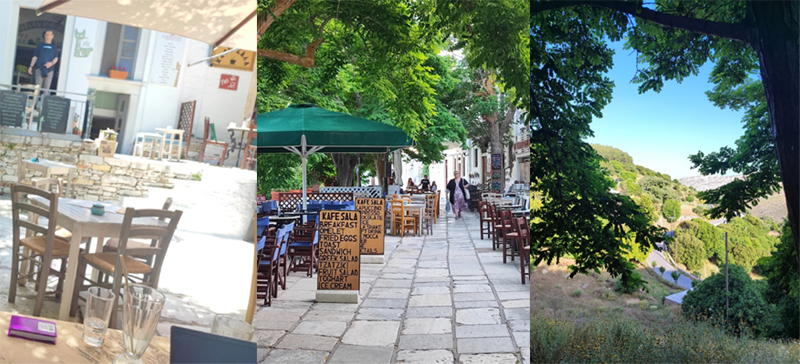
I am a big fan of booking a guided tour when I go somewhere for the first time, and I’d certainly recommend considering a half day tour of Naxos. It will help orientate you and give you a flavour of the island today and in the past.
If you hire a car, my advice is not to get too ‘organised’ about where you go. Yes, you may have a few places on your ‘definitely want to go there’ list, but beyond that I’d suggest just following the road and see where you end up. We did just that and ‘discovered’ tiny fishing hamlets like Apollonas, where there were plenty of cafes overlooking the small, sheltered beach with its crystal-clear waters. The perfect place to stop for an iced coffee or a cool beer.
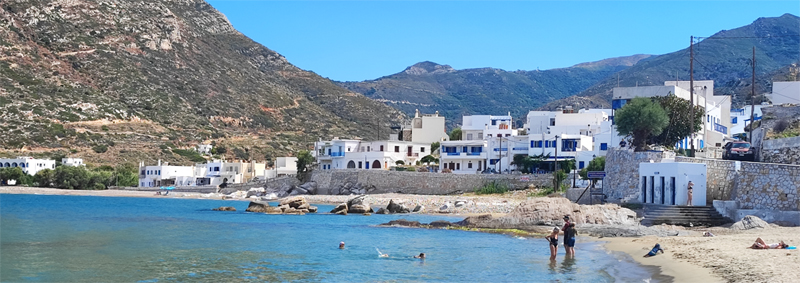
Naxos really does have a little bit of everything making it ideal for families, friends, couples or singles. It’s also much more economical than its busier counterparts like Mykonos and Santorini. The ideal times to visit are May, June and September, with July and August being the busiest months.
FACTBOX
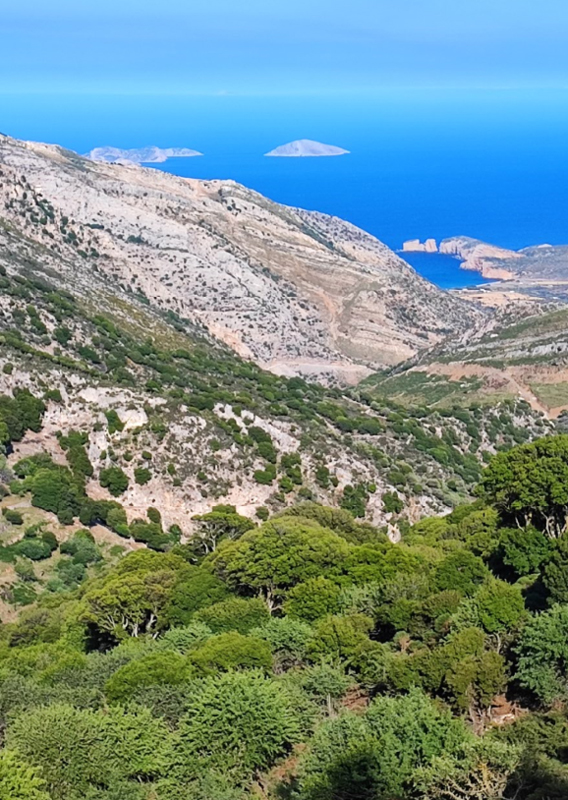 Naxos Island – www.naxos.grnaxos.gr
Naxos Island – www.naxos.grnaxos.gr
facebook.com/naxosislandgreece/
instagram.com/naxosandsmallcyclades
twitter.com/NaxosIslands
pinterest.co.uk/naxosandsmallcyclades
naxosislandandsmallcyclades/
Kozi – kozinaxos.gr
Scirocco – scirocco-naxos.gr
To Elliniko – toelliniko.com
Princess of Naxos Hotel – princessofnaxos.com
Eggares Olive Press – olivemuseum.com
ABOUT THE AUTHOR
Chantal Cooke is an award-winning journalist and broadcaster and co-founder of PASSION for the PLANET.
Chantal is passionate about tourism being used as a force for good. You can follow her adventures on Facebook and Twitter @chantalcooke and on Instagram @Chantaldcooke

